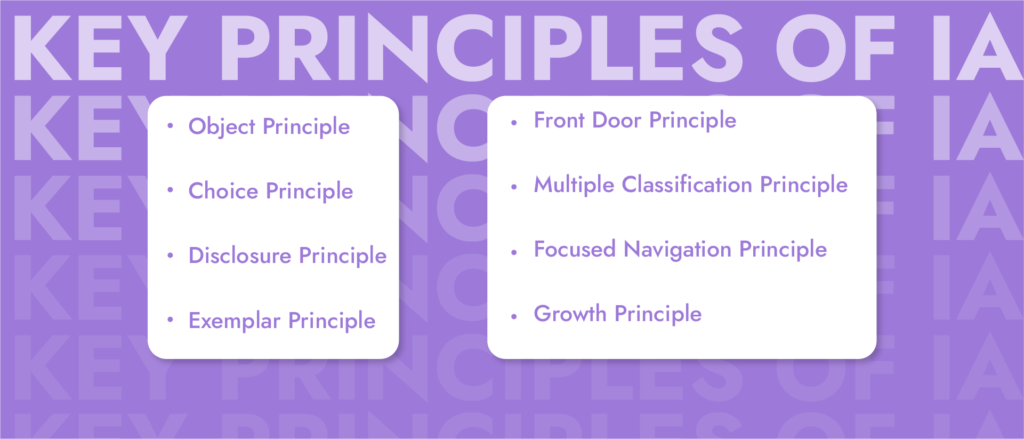In the world of web development and design, there’s a significant facet that often doesn’t get the attention it deserves: information architecture (IA). IA is the blueprint of your website, it’s the skeletal framework that holds and organizes your content, paving the way for smooth navigation. It’s your website structure, that silent, unseen guide that seamlessly leads your visitors from one page to another, ensuring a positive user experience.
The Essence of Information Architecture
At its core, information architecture is the art and science of structuring and organizing the information on your website. This isn’t merely about placing the “About Us” or “Contact” pages at appropriate locations, but rather creating an intricate, cohesive web of content that facilitates seamless user navigation. Every piece of content has its place, a specific spot in the website structure where it is most accessible, most logical, and provides the most value.
One of the primary goals of a well-designed IA is to make your website intuitive and user-friendly. Good IA mapping fosters a natural flow that guides visitors through your site, enabling them to find the information they seek quickly and effortlessly. This, in turn, enhances user experience (UX), encouraging visitors to spend more time on your site and interact more meaningfully with your content. From browsing your product catalogue to reading your blog posts or making a purchase, each action is made more straightforward with a well-thought-out website architecture.
Beyond providing a stellar user experience, IA plays a crucial role in optimizing your site for search engines. Search engine algorithms have grown increasingly sophisticated, and they now prioritize websites that offer clear, organized structures. Such sites are deemed user-friendly, offering high-quality, easy-to-find content — traits that search engines value highly.
This brings us to the realm of site structure and SEO site structure. A solid SEO site structure, underpinned by strategic IA, ensures that search engines can easily crawl and index your website. When your site’s content is logically grouped and interlinked, search engines can understand the context and relationships between different pages better, aiding in higher rankings. Furthermore, well-organized content also makes it more likely that your site will feature in search engine results for relevant user queries. By considering how web design impacts content, you can optimize your site’s visibility, driving more organic traffic and improving overall visibility.
In essence, a site’s information architecture is the bridge between user experience and search engine optimization. It’s about balancing the needs of your users with the requirements of search engine algorithms. A successful website architecture creates a win-win scenario, making your site a delight for users to navigate, while also making it easy for search engines to understand and index your content. Ultimately, information architecture is a cornerstone of a successful website, directly contributing to better user engagement, improved search visibility, and, in the case of commercial websites, potentially increased conversions and revenue.
Information Architecture and SEO Site Structure
Search engine algorithms value a well-structured website. It means that the website is user-friendly and has been designed keeping in mind the best user experience. A strong SEO site structure aids search engines in understanding and indexing your site, which can improve your visibility and rankings.
There are different aspects to consider when it comes to SEO site structure, such as how pages link to one another, whether the site uses HTTPS, and the website’s loading speed. However, at the core of a good SEO site structure lies a well-designed information architecture.
How to Create Website Architecture
Designing effective website architecture isn’t an overnight process. It’s one of the crucial stages of the web design process and requires careful planning, strategic thinking, and a user-centric mindset. The first step is understanding your audience’s needs and how they would potentially navigate your site.
From there, you start creating the blueprint of your website — also known as IA mapping. This process involves defining how your web pages and content will be structured and linked. It’s about categorizing your information in a way that makes sense to your users. An effective approach is to begin with your main categories, or primary pages, such as “Home”, “About Us”, “Services”, “Contact”. Under each of these, you may have secondary pages or subcategories.
For example, under “Services”, you might have “Web Development”, “Graphic Design”, “Content Creation”. Each of these could further have their own set of pages or posts underneath. The goal is to create a hierarchy that is logical, easy to follow, and enhances the overall user experience.

8 Key Principles of Information Architecture
- Object Principle: This principle refers to the concept of treating content as dynamic entities with their own lifecycle, characteristics, and behaviours, similar to the approach in object-oriented programming.
- Choice Principle: The idea here is to limit the number of choices offered to users to prevent overwhelming them and reduce decision fatigue, thus enhancing user experience.
- Disclosure Principle: This principle suggests revealing just enough information to users to help them predict what might come next, allowing them to decide whether to explore further.
- Exemplar Principle: It highlights the use of concrete examples instead of vague descriptions to illustrate what’s inside a category, aligning with how our brains naturally categorize information.
- Front Door Principle: Recognizing that users can enter a website from various points, not just the homepage, it emphasizes that every page should clarify where users are and what actions they can take.
- Multiple Classification Principle: This principle suggests providing various ways for users to sort and find information, acknowledging that people categorize information differently.
- Focused Navigation Principle: It proposes that navigation menus should be purpose-driven and clutter-free, enhancing their functionality and utility for users.
- Growth Principle: This principle isn’t explained in your text, but typically, it would involve designing with scalability in mind, ensuring the information architecture can accommodate growth and changes in the content over time.
A Closer Look at IA Mapping Tools
Creating a logical and user-friendly website organization can seem like a daunting task. However, thanks to numerous IA mapping tools available today, visualizing and structuring your website’s architecture can be made more manageable and efficient. These tools range from flowchart software to wireframing tools and dedicated IA platforms.
A Closer Look at IA Mapping Tools
Creating a logical and user-friendly website organization can seem like a daunting task. However, thanks to numerous IA mapping tools available today, visualizing and structuring your website’s architecture can be made more manageable and efficient. These tools range from flowchart software to wireframing tools and dedicated IA platforms.
Flowchart Software
Flowchart software is one of the simplest yet most effective tools to start with when planning your website’s organization. Lucidchart and Microsoft Visio are two such popular options. These platforms enable you to create hierarchical diagrams that reflect the structure of your website, thus providing a clear visual representation of how your webpages connect and interact with each other.
These flowchart tools allow you to sketch out a high-level view of your site’s structure, understand the interrelationships between different sections, and identify potential areas where users might encounter navigation issues. By offering a visual approach to IA mapping, they facilitate a more intuitive design process and make it easier to communicate the planned structure to stakeholders.
Wireframing Tools
Wireframing tools such as Sketch and Balsamiq provide a more detailed view of your website organization. Unlike flowchart software, which focuses on the high-level structure, wireframing tools allow you to design individual pages and show how they connect within the overall architecture.
With wireframing, you can define the layout of your pages, the placement of elements, and how users navigate from one page to another. This adds a layer of granularity to your planning process, helping you design with the user journey in mind and ensuring that every page serves a clear purpose in your website architecture.
Dedicated IA Tools
For a more comprehensive approach to IA mapping, dedicated tools like Slickplan and Dynomapper might be what you need. These tools offer a suite of features designed specifically for planning and designing website organization.
They allow you to create sitemaps, build user flows, visualize hierarchies, and even test the usability of your design. Some of them also offer collaboration features, making it easy for teams to work together on the website’s structure, and analytics features to provide insights into how your current website structure is performing.
In essence, information architecture is the unsung hero of successful website organisation. It plays a pivotal role in enhancing user experience and improving SEO. Through a well-designed website architecture, you create a clear path for users and search engines, increasing the visibility and usability of your site. Regardless of the IA mapping tools you choose, remember, creating a user-friendly, intuitive, and SEO-optimized website ultimately hinges on an effective information architecture.




